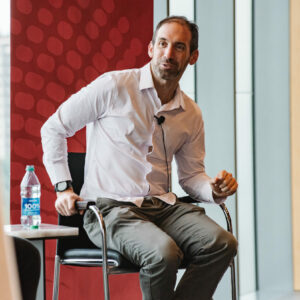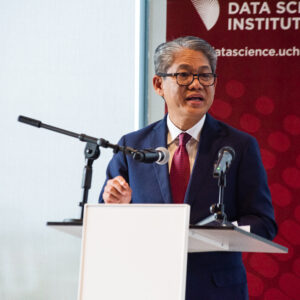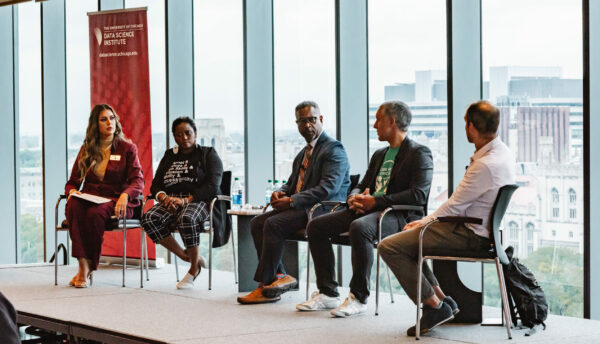Forging a Digital Future

In an increasingly interconnected world, digital inclusion is not just a matter of convenience; it’s a question of equity, opportunity, and fundamental access to essential resources. The Internet Equity Initiative (IEI), an organization committed to bridging the digital divide, has emerged as a vanguard in this movement. In a landmark event, IEI recently hosted the Digital Inclusion Summit, a gathering that didn’t merely discuss the challenges of digital exclusion but actively sought solutions. The summit, an assembly of visionaries, advocates, and change-makers, has set the stage for a new era of digital equity.
IEI’s Digital Inclusion Summit, held in September, was a formidable testament to the power of the collective. The summit’s primary goal was clear: to address the pervasive issue of digital exclusion and explore strategies to create an inclusive digital future.
As our world becomes increasingly reliant on digital technologies for education, work, healthcare, and even social interaction, those without access are at a significant disadvantage. The COVID-19 pandemic made this divide painfully apparent, with millions of students, workers, and vulnerable communities left struggling due to inadequate access to the internet and digital devices. The backdrop against which this summit unfolded was marked by an urgent need for collective action.
The summit was not just about dialogue; it was about results. It was a response to the growing recognition that digital exclusion is not merely a matter of access; it’s a matter of justice.
Centering Equity: IEI’s Mission
The Internet Equity Initiative, or IEI, is an organization with a clear vision: a society where access to digital resources is truly equitable, leaving no one behind. Dr. Alexis Schrubbe, the Director of IEI, explained the organization’s mission succinctly: “We are committed to uniting people, communities, and institutions to realize digital inclusion as a cornerstone of societal justice.”
In her Keynote address, Professor Nicole Marwell of the Crown School of Social Work emphasized that digital equity was not just about providing access but ensuring that this access translated into improved outcomes for all. She spoke passionately about the importance of understanding how different population groups benefit from digital inclusion.
The summit included a diverse range of speakers and panel discussions that delved into the multifaceted landscape of digital exclusion and the strategies required to mitigate it. Under the banner of “Demystifying the Digital Inclusion Ecosystem, From Policy to Pings,” the summit’s sessions were informative, thought-provoking, and innovative.
Daniel Anello, CEO of Kids First Chicago, explored the role of education in bridging the digital divide. He emphasized that, as digital tools became essential for learning, ensuring that all students had access was crucial.
Nick Feamster, a Professor of Computer Science at the University of Chicago, contributed his expertise on the technical aspects of digital inclusion. He spoke about the importance of network infrastructure and the need for robust, accessible, and secure systems.

The education sector was not the only focus. The summit explored how digital inclusion impacted various aspects of society, including healthcare and community engagement. Shaka Rawls, Principal of Leo High School in Chicago, emphasized the importance of digital inclusion in healthcare, pointing out how telehealth had become a lifeline during the pandemic.
Kyla Williams Tate, Director of Digital Equity at Cook County, delved into the critical role of community engagement. She highlighted the importance of involving communities in decision-making processes related to digital inclusion and tailoring solutions to meet their specific needs.
The city of Chicago, known for its rich history and vibrant culture, has not been immune to the challenges of digital inclusion. Devon Braunstein, Digital Equity Director for the city of Chicago, shared insights into the development of the city’s Digital Equity Plan. This plan builds on the success of Chicago Connected, a groundbreaking $50 million, four-year public-private partnership launched in June 2020.
Chicago Connected was conceived as a response to the immediate crisis of the pandemic. Its goal was to provide free internet access to low-income Chicago Public Schools students. In its first two years, the program connected 100,000 students to at-home broadband, proving the significance of addressing digital inclusion head-on.
The Digital Equity Plan, as described by Braunstein, is a comprehensive effort to expand initiatives beyond connecting students. The plan includes a focus on public Wi-Fi, broadband expansion, and leveraging federal connectivity subsidies. Notably, it outlines recommendations for creating a public-facing website offering digital equity resources and a consumer toolkit for navigating broadband offerings. These tools are essential for individuals seeking to make the most of digital resources and opportunities.
Matt Schmit, the Director of the Illinois Office of Broadband, presented an exciting development that extends beyond Chicago. Schmit discussed the recent launch of a statewide cohort of digital navigator fellows. These fellows play a critical role in planning and coordinating digital equity programs at the local level.
Digital navigators provide on-the-ground support for digital skills and computer training. They also play a pivotal role in raising awareness and participation in the federal Affordable Connectivity Program. Their mission is to ensure that all Illinois residents, regardless of income or background, can access the benefits of high-speed internet.
Schmit encapsulated the larger vision, saying, “Through record federal and state investments, Illinois has embarked on historic expansion of broadband infrastructure across the state. To meet our goal of making sure every Illinoisan can participate in the digital world, we also need to address non-infrastructure barriers that stand in the way of connectivity – from internet affordability to access to connected devices to basic computing skills.”
Partnerships to bridge the digital divide
Throughout the summit, the resounding message was clear: partnerships are essential to accelerating digital inclusion. Gil Quiniones, the CEO of ComEd, emphasized this point. He noted that finding a solution to the digital divide is a multifaceted and complex endeavor.
The digital divide is a multifaceted challenge, and resolving it requires diverse partnerships and durable coalitions. Service providers, educational institutions, policymakers, and the community must unite to ensure that the benefits of the digital age are accessible to all.
Quiniones acknowledged that the cost of providing access, both for service providers and customers, could be significant. However, through partnerships and collaborative efforts, these costs can be mitigated. The summit demonstrated that there is widespread recognition for the need to achieve digital equity in every community.

The Digital Inclusion Summit served as a testament to what can be achieved when individuals and organizations come together with a shared mission. It was not merely a conversation about the digital divide; it was a call to action, a blueprint for a future where digital inclusion is not just an aspiration but a reality.
IEI’s Digital Inclusion Summit was more than just a gathering of like-minded individuals; it was a catalyst for change. By addressing the multifaceted challenges of digital exclusion, exploring strategies to bridge the divide, and sharing success stories from Chicago and beyond, the summit set the stage for a future where digital equity is not a dream, but a reality.
